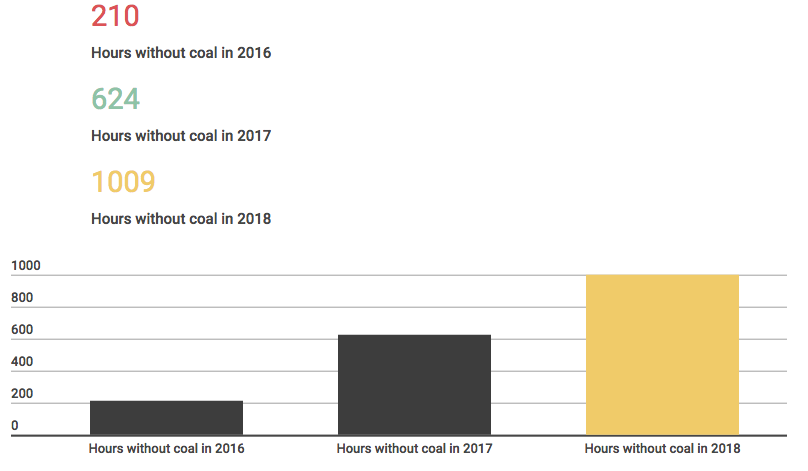While negative news of Brexit continues to plague the U.K., there is some light in the darkness. Non-profit service, MyGrid GB, which charts the changes in electricity generation in the U.K., today tweeted that the country has gone for 1,009 hours without relying on coal this year.
This compares to 624 hours across the whole of 2017, and 210 hours in the 12 months of 2016.
While gas and nuclear still represent the largest share of electricity – 48.6% and 22.8%, respectively, this week – solar PV’s share has significantly increased recently, due to the current heat wave being experienced in the U.K.
As such, it is the third most important source of electricity in the country, providing 7.4% in the last seven days. Today, it is just behind nuclear (18%), at 14.4% or 5.88 GW.
New solar records
Between June 21-28, meanwhile, solar PV saw over 75 GWh of energy generated, and created over 8 GW of power each day, for eight consecutive days – a new record. Sunday, June 24 shone in particular, with solar PV generating over 27% of electricity for the U.K. grid for around one hour.
Duncan Burt, director of system operations at National Grid, commented, “We are witnessing many significant changes across the energy landscape, including how and where electricity is generated. During the past 12 months alone, we have seen renewable generation records broken and we expect this trend to continue, as technology advances and we find new ways to accommodate and manage more wind and solar power on our network.”
He continued, “We view these changes very much as a positive, bringing new opportunities in how we balance electricity supply and demand, second-by-second. The latest example is solar generation exceeding 8 GW, for eight days consecutively, beating the previous record of 7 days in May. As the system operator for GB, we’re at the very heart of this exciting new world and ready to play our part.”
In other good news, wind overtook nuclear for the first time in Q1 2018. Overall, renewable energy's share reached 30.1% in the quarter, up 3.1% compared to the same period a year earlier. And despite the roadblocks to its installation, solar PV reached a cumulative installed solar PV capacity of 12.9 GW by the end of Q1.
Coal, meanwhile, is set to be completely phased out in the U.K. by 2025.
Future energy scenarios
Releasing its Future Energy Scenarios to 2050 yesterday, the U.K.'s National Grid outlined four different scenarios, considering growing electricity demand and a significant increase in energy infrastructure from new renewable generation and EV charging networks.
Only two of them meet the U.K.’s 2050 carbon reduction target, however, on the back of a large growth of renewables and energy storage, and almost completely decarbonized transport.
This content is protected by copyright and may not be reused. If you want to cooperate with us and would like to reuse some of our content, please contact: editors@pv-magazine.com.




Excellent plan